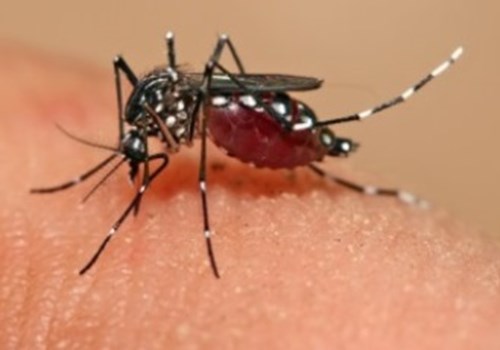Inkoo Virus now added to NCPV's collection

We have recently added Inkoo virus (INKV) to the National Collection of Pathogenic Viruses (NCPV) as catalogue no. 1308255v.
INKV is a mosquito-borne virus belonging to the family Peribunyaviridae, genus Orthobunyavirus, and is a member of the California serogroup (1). INKV usually remains asymptomatic but may cause mild influenza-like symptoms (2). Investigations into INKV pathogenesis is limited, however research suggests that it may cause mild encephalitis, seasonal fevers, infection of the brain and even chronic neurological infections (3).
First isolated in 1964 from Aedes communis in Inkoo, Finland, INKV is one of ten mosquito-borne viruses that are known to be pathogenic to humans in Europe (4). INKV has been isolated from Ae. communis mosquitos within Finland, Sweden, Norway alongside Ae. hexodontus and Ae. punctor in Russia. It also has a possible vertebrate host; Lepus timidus (mountain hare). Although little is known about INKV transmission cycles, it is suggested to show vertical transmission; after reports from northern Sweden showed INKV RNA was detected and sequenced in larvae from Ae. communis (4).
INKV is a negative-sense, single-stranded RNA virus. Its genome is approximately 12 kb in size and is tri-segmented. The 1 kb S segment encodes for the nucleocapsid protein, the 4.5 kb M segment encodes for a polyprotein that is cleaved into two enveloped glycoproteins, while the third segment, the L segment, encodes for its RNA-dependent RNA polymerase (4).
The clinical frequency of INKV is unknown, although it is known to be endemic in northern Europe. Its seroprevalence is particularly high in human populations in Finland and Sweden; with the proportion of the Finnish and Swedish populations carrying anti-INKV antibodies being 51% and 41% respectively in all those tested (3,4). This has increased since its discovery in the 1960’s when only 24% of those tested in Finland were seropositive (3).
INKV was deposited to NCPV by colleagues within Public Health England at Porton Down. The virus is available for research purposes as live virus or as viral RNA.
References
-
Tingström, O., Wesula Lwande, O., Näslund, J., Spyckerelle, I., Engdahl, C., Von Schoenberg, P., Ahlm, C., Evander, M. and Bucht, G. (2016). Detection of Sindbis and Inkoo Virus RNA in Genetically Typed Mosquito Larvae Sampled in Northern Sweden. Vector-Borne and Zoonotic Diseases, 16(7), 461-467. DOI: 10.1089/vbz.2016.1940
-
Putkuri, N., Kantele, A., Levanov, L., Kivistö, I., Brummer-Korvenkontio, M., Vaheri, A. and Vapalahti, O. (2016). Acute Human Inkoo and Chatanga Virus Infections, Finland. Emerging Infectious Diseases, 22(5), 810-817. DOI: 10.3201/eid2205.151015
-
Evander, M., Putkuri, N., Eliasson, M., Lwande, O., Vapalahti, O. and Ahlm, C. (2016). Seroprevalence and Risk Factors of Inkoo Virus in Northern Sweden. The American Journal of Tropical Medicine and Hygiene, 94(5), 1103-1106. DOI: 10.4269/ajtmh.15-0270
-
Lwande, O., Bucht, G., Ahlm, C., Ahlm, K., Näslund, J. and Evander, M. (2017). Mosquito-borne Inkoo virus in northern Sweden - isolation and whole genome sequencing. Virology Journal, 14(1) 61-70. DOI: 10.1186/s12985-017-0725-5
Prepared by Callum Robertson
